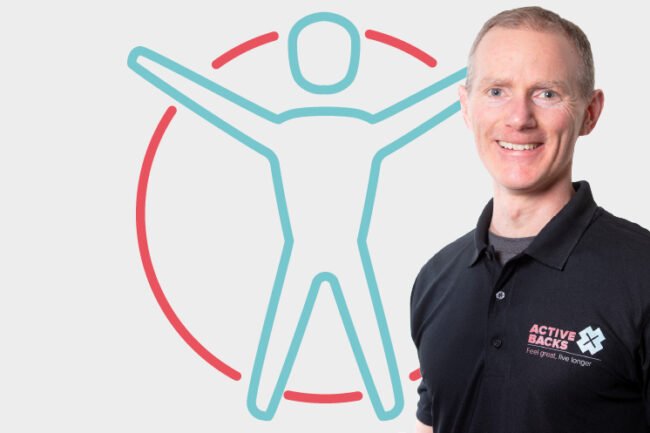How to bend over with back pain / sciatica
How to bend over with back pain / sciatica
This episode is entitled “How to bend over with back pain / sciatica”. You will learn:
- Why bending over with back pain / sciatica is such a problem
- What watching tobacco pickers 23 years ago taught me
- The power of the hip hinge

Why bending over with back pain / sciatica is such a problem
Bending over can make your pain worse, so don’t do it. The golden rule is “use it, but don’t abuse it”. If it increases your pain, you should not be doing it in that particular way. It doesn’t matter what the cause of the pain is, it’s sending you a message that you should listen to. If your pain increases when you bend forwards, don’t do so. One of the first rules of rehabilitation is don’t do things that make it worse.
When you bend forwards, you’re stretching things at the back of you and compressing them at the front of you. When you bend forward you stretch out all the posterior tissues of the spinal column (ligaments and muscles). You’re also compressing the front of the disc. For some people, the pain isn’t so bad as they bend forwards, but it’s worse as they’re coming back up. You’re shifting load, you’re using muscles, ligaments, tendons to achieve that. If they are injured in any way or just sensitive, then you’ll get a pain message. The purpose of pain is an alarm system.
What watching tobacco pickers 23 years ago taught me
I was on a tobacco farm, in Zimbabwe, and the pickers were picking tobacco by hand. They walked down the row bent double, picking the leaves, and stayed that way till the end of the row. Then they would stand up, arms backwards, and then go back forward into a bent-over position. Watching them, it occurred to me that they actually had a very particular technique for bending forwards. They didn’t actually bend their lower backs forward. Stand up tall and put your hand in the small of your back. There is an inward arch called a lordosis. These tobacco pickers actually maintained that lordosis, and did pretty much all their bending by hinging at the hip and a little softening or bending of the knee. They maybe did a little bit of bending through their spines, but not that much.
When I say to people with back pain / sciatica “okay, let’s see how far forward you can bend”, the first thing they do is bend their backs. If they’ve been through pilates, they’ve often been encouraged to curl down, and all the segments of the spine participate in that movement, which is quite possibly a very bad idea. If you’re going to do any great amount of bending forward when that normally hurts, don’t do it by curling down. We want you to bend your back in the long term, but in the short term, for the first few days or weeks, limit forward bending of the spine. If it’s as painful as it recovers, then we will get you back into using your spine in all different ranges of motion. If it hurts to bend your back forward with back pain / sciatica, don’t do it.
The power of the hip hinge
Stand upright with your feet about hip-width apart, almost parallel. Lift your ribs up away from your hip bones. This will engage your abdominal muscles, which should be reasonably firm before starting. If you look down at the palms of your hands in front of your hips, your little fingers are touching your groins. Use the inner border of your hand to nod your hips backwards. Push into the groin area and push your hips backwards equally. Imagine there’s an open drawer behind your bottom and you’re just nudging it shot with it. As you come back from it and bring your hips forwards, don’t push them further forward and go past standing upright.
If you’ve got a reasonable range of motion in your hips, you ought to be able to keep hip hinging to quite a range of motion. So that has me now hip hinged with fairly straight knees, not locked knees. I’ve softened them a little bit, but have hip hinged to the point where my trunk is about a 40, 45 degree angle. If you have sciatica you may not be able to hip hinge very far without pain shooting down your leg, so avoid it. Remember: “use it, but don’t abuse it”. You can still hip hinge within the limits of your pain, as far as you can comfortably. Try and make it a nice, relaxed, easy action instead of a tense one. Nudge your hips backwards and hip hinge. Practice this while brushing your teeth.
The next joint that we should bring into play is your knees. First hinge at the hips and then immediately start to squat down. That should bring you reasonably low down without actually bending your back forward. As you go down towards the end of that range of movement, you can start to bend or curl your back forwards. Then come back up by unbending the back and unsquatting and unhinging at the same time to return to an upright standing position.
There are other ways of bending over, one of which, the safest, is to put all the weight on one foot at the front. Put one leg behind yourself and lean forwards over the one supporting leg at the front, keeping your back flat. The weight of the leg behind you offsets the weight of your chunk and, at the same time, that tends to be very little actual bending of the lower back in that position.


